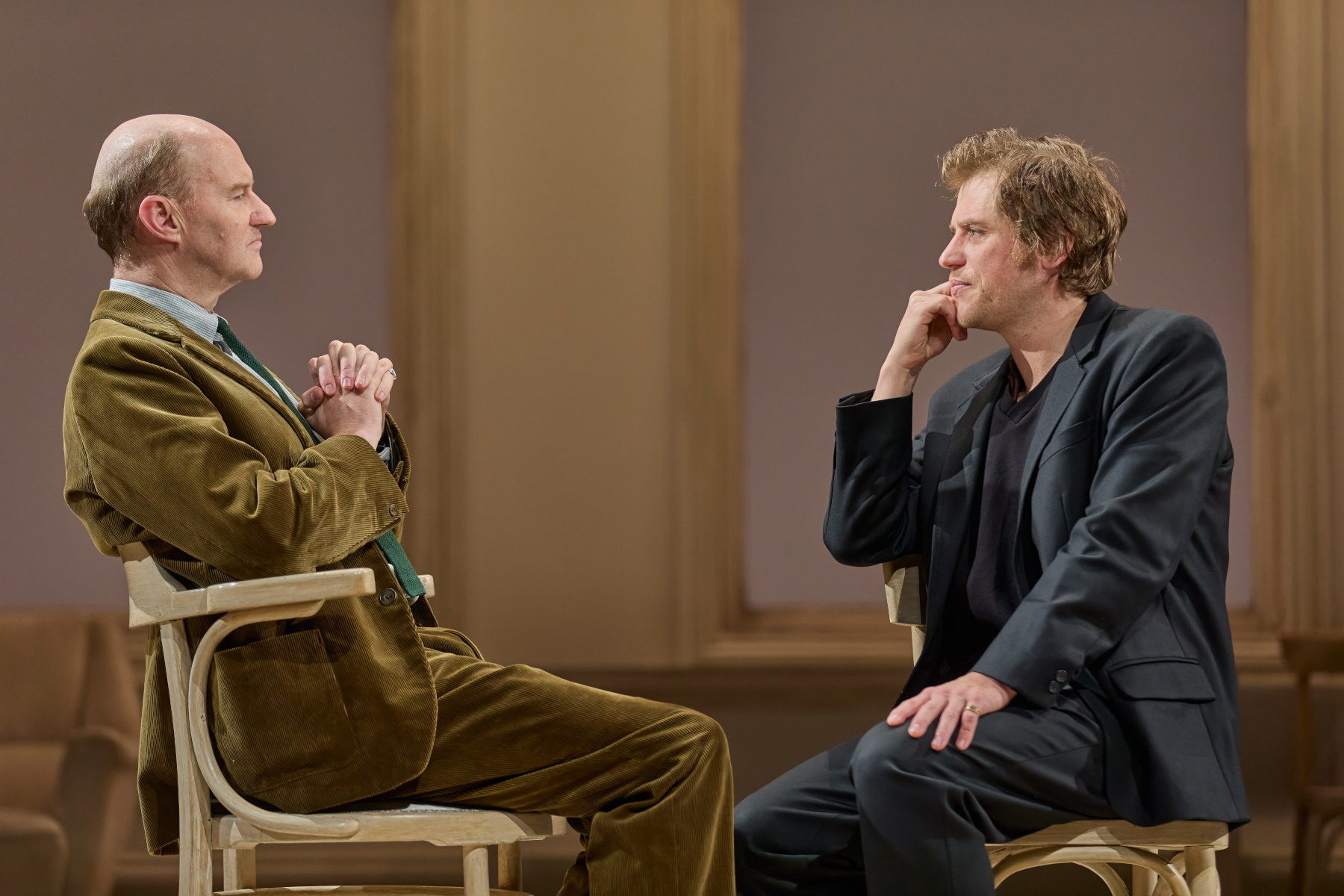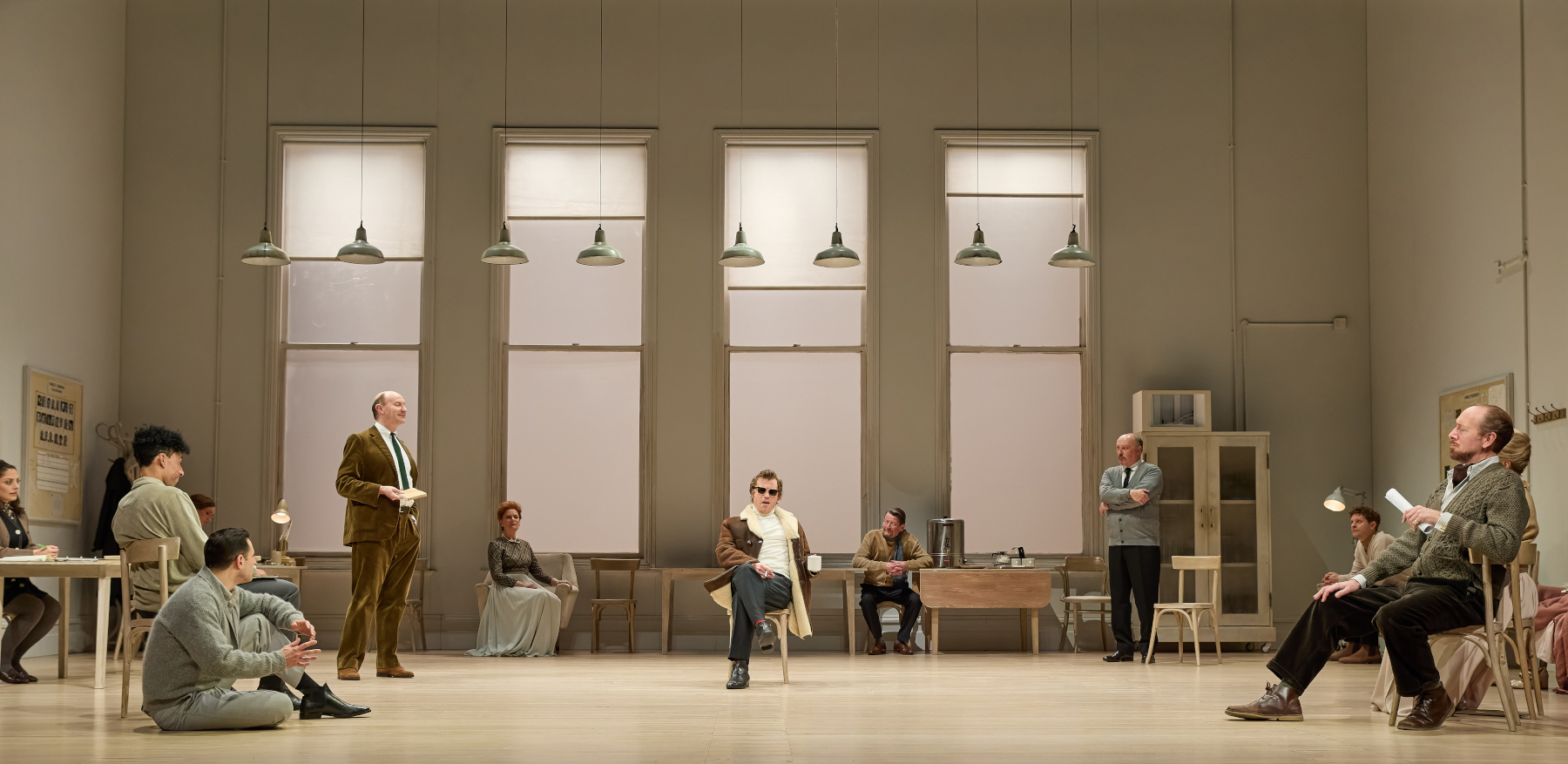Mark Bibby Jackson reviews The Motive and the Cue at the Noel Coward Theatre.
Motive and the Cue is a play about contrast. Jack Thorne’s play directed by Sam Mendes has recently transferred from the National Theatre to the Noel Coward Theatre in the West End. It explores the difference between old school and modernism in the portrayal of Hamlet, through a series of scenes depicting the rehearsals for the Sir John Gielgud directed Richard Burton Hamlet, which became the longest running play on Broadway in 1964. The play was notorious for the conflict between Gielgud and Burton, between the traditional Shakespearean actor and the modernist film star.
The Motive and the Cue looks behind stage at the rehearsals for the performance, focusing on the dynamic between the two stars. Having not seen the original National run early on in the year, I was expecting to see Johnny Flynn as Burton stealing the show, however, it is Mark Gattis’ Gielgud that holds the performance together.
This is the occasion where the straight man upstages the comic stealing all the lines, and appearing centre stage. Gattis has described the part as the best role he will ever play, and he gives a gravitas to the whole performance, capturing Gielgud’s voice, mannerisms and appearance to perfection.


Behind this he demonstrates the vulnerability of the star who peaked in his 20s, and who played every major Shakespearean role including Lear before he turned 30. What does the future hold to him? In contrast Burton was at his peak. He had just married Elizabeth Taylor, and was a box office success. It was Burton who chose Gielgud to direct him, and make him the Shakespearean great that Gielgud used to be.
The Motive and the Cue maintains our interest in the shifting relationship between the two actors, with at one stage Taylor acting as a negotiator between the two rivals. Throughout there is this great tension between the classicist and the modernist. Even if you know nothing about the original Broadway performance, or little about Hamlet, you should be gripped by the tension between the central characters.
The play has a wonderfully simple set by Es Devlin in which Gielgud and Burton sit opposite each other like fighters waiting for the bell to ring. However, when they debate how to perform ‘To be or not to be’, the two come together. This is the central message of the play. You can have different viewpoints, different lifestyles, different outlooks, different perspectives, but ultimately together you can create something wonderful.
Whereas Gatiss is the glue that holds the play together, Flynn is constantly trying to tear it apart. The chemistry between the two is great. Tuppence Middleton makes an excellent and convincing Taylor, although much like Ophelia, hers is a role that is upstaged by the male lead. Sarah Woodward excels as Eileen Herlie (Gertrude). Mendes’ staging is absolute perfection.
The Motive and the Cue is now performed at the Noel Coward Theatre, which is where Gielgud played Hamlet in 1934. It shows that despite being told many times, Hamlet lives on. The Motive and the Cue may not be Hamlet in its entirety, but it does provide a most intriguing clash of styles and ages, of internal conflict and turmoil that befits the original play. Uncle Will would be proud.
Motive and the Cue Review
It plays at the Noel Coward Theatre until 23 March 2024. For more information and tickets, click here.









